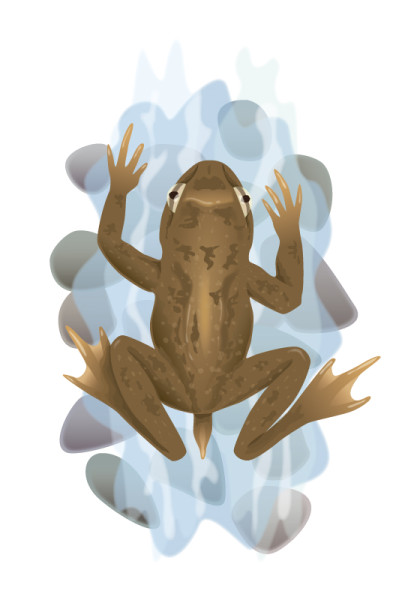What do frogs, run of the river hydro and World Water Day have in common?
The theme for World Water Day 2014 is water and energy. It’s a fitting theme for us here in Canada. Why? Many of the water challenges we face come from energy production. Top of mind for many in B.C., for example, may be the potential impacts on our salmon from run-of the-river hydro development.
But there’s another lesser known species at the centre of this water and energy issue: the coastal tailed frog. The coastal tailed frog is one of the most primitive frog species in the world and it lives here, in B.C., deep in the headwaters of our wildest streams.

The coastal tailed frog is an ancient survivor. It’s been around since the time of Pangaea – when the world was a single continent. That makes it one of the oldest lineages of frogs on the planet. It also lives longer than most other frog species in the world – with a life span of up to 20 years.
During its many life stages – from egg to tadpole to foraging juvenile and finally breeding adult – coastal tailed frogs are reliant on the abundance of water found in B.C.’s coastal mountains.
Why Frogs need Flow
These ancient amphibians are habitat specialists because they’ve adapted to a very specific place in the world. Their homes of choice are fast- flowing, cool and clear mountain streams surrounded by old growth forest in the rain shadow of coastal mountain ranges.
Coastal frogs can die very quickly if they don’t stay wet because they breathe through their skin. To stay cool and moist, they’ve come to rely on the steady rainfall of the temperate rainforest that flows across the forest floor into turbulent headwater streams.
This primitive creature catches prey with its mouth instead of a flick of the tongue like other frogs. Unable to communicate the typical frog ‘ribbit’, they rely on the water to carry the chemical signals they emit to communicate with potential mates.
Healthy Flow, Healthy Habitat
Coastal tailed frogs are very susceptible to habitat loss. So as we approach World Water Day, here are some the ways we can protect habitat for these unique species.
Back to the energy issue, one of the threats to their habitat is run of river hydropower dams built in mountain streams. These can drain water from the diversion reach of streams, alter river flow and affect the frog life cycle.
To help address this, you can support water laws that require run of river hydro to maintain healthy river flow when operating their dams.

How else can you help frogs? Participate in the provincial Frog Watch Program to help build our understanding of this remarkable species.
Visit our Flow and Species page to learn Canada’s salmon and the industrious beaver also depend on healthy, flowing rivers.

